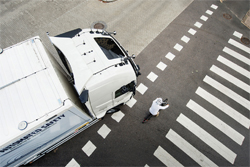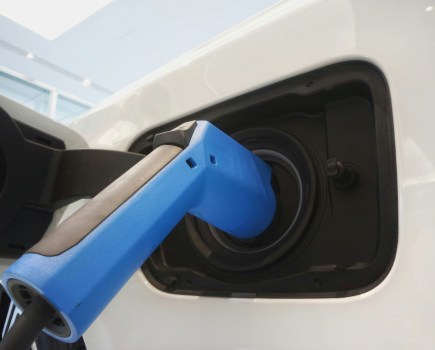
Volvo Trucks reckons it has developed new technology which it claims can eliminate the risk of accidents caused by a limited field of vision, by enabling a vehicle to take a 360-degree scan of its surroundings.
According to the Swedish manufacturer, the vehicle evaluates information from multiple sources simultaneously and suggests actions to avoid incidents.
The new tech is the result of a research project called ‘Non-Hit Car and Truck’, conducted in co-operation with Volvo Cars. Volvo said it is now possible to enable a vehicle to register and evaluate everything that’s happening in its surroundings and suggest actions to avoid accidents, such as collisions with pedestrians, cyclists or other vehicles.
If the driver does not respond to the suggested actions, the steering or braking system can then be activated autonomously.
Volvo said the main component is a data platform that fuses the sensory input from cameras, radars and other sensors positioned on all sides of the vehicle. This enables the truck to perform a 360-degree scan of its surroundings every 25 milliseconds. All the data input is interpreted, risk situations are analysed and different route options for the vehicle are generated.
By combining several sensory systems, the technology can distinguish and identify different road users including pedestrians, cyclists, motorcyclists and other vehicles since it can sense both their distance and direction.
“The technology can predict traffic scenarios up to five seconds ahead, depending on the speed of the objects, and map out the best plan of action,” said Volvo Trucks systems engineer, Mansour Keshavarz. “In many ways the technology serves as a co-driver – but one that can see all around the vehicle.”
But Volvo said the technology is not yet ready to be applied in a commercial safety system. It said compared to vehicle automation in cars, there are specific challenges to overcome when developing this type of technology for heavy vehicles.
“Trucks are a different type of vehicle and do not act the same way as cars in traffic,” Keshavarz said. “For example, every truck is loaded differently and their sheer size prevents them from carrying out severe avoidance manoeuvres, such as swerving quickly to avoid a collision. So it is important to research and develop technology specifically for heavy goods vehicles.”
The manufacturer said the technology is currently in the test phase and may hit the market five to 10 years from now.






